Whenever the adjective ‘technical’ is used to describe a tent, it means two things: that it uses cutting edge fabrics and design; and that it’s very expensive. British camping brand OLPRO seems to want to change that, offering a little one-person backpacking tent for well under £200.
Cheap tents are plentiful just as expensive ones are. But the vast majority of low cost tents are not built with durability and performance in mind. The OLPRO Solo allegedly is, so we were keen to try it out.
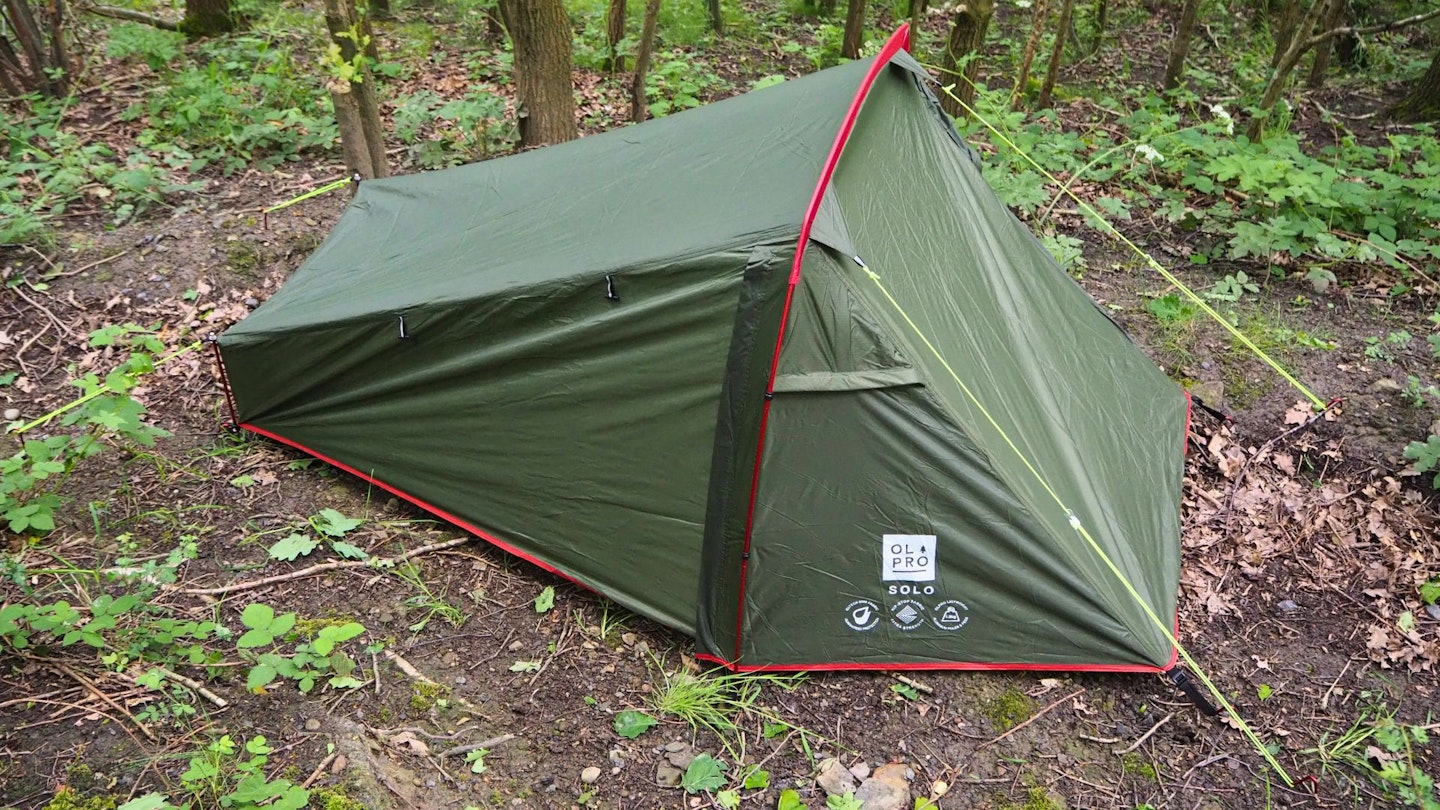 LFTO
LFTOPros
- Arguably best value solo tent on the market
- Pitches outer first or all-in-one
- Good weatherproofing
- Reasonably sustainable
- Moderately spacious interior
Cons
- Isn't as lightweight or compact as some more premium rivals
| Type | Single hooped pole (non freestanding) |
| Weight | 1.8kg |
| Packed size | 45 x 14cm |
| Doors | 1 |
| Vestibules | 1 |
| Inner | Polyester |
| Fly | Recycled polyester (5000mm HH) |
| Groundsheet | Sewn-in bathtub style |
| Poles | Aluminium |
Design and features

The OLPRO Solo takes a similar design approach to many lightweight backpacking tents (including those from high end brands like Terra Nova and Nordisk). It has a central hooped pole with two small ones that sit at the front corners of the tent.
The OLPRO Solo uses a recycled polyester material to make the Solo, which isn’t as lightweight as nylon but tends to perform better in the wet – it doesn’t sag to the same degree. OLRPO claims an impressive 5000mm HH rating for this fabric.
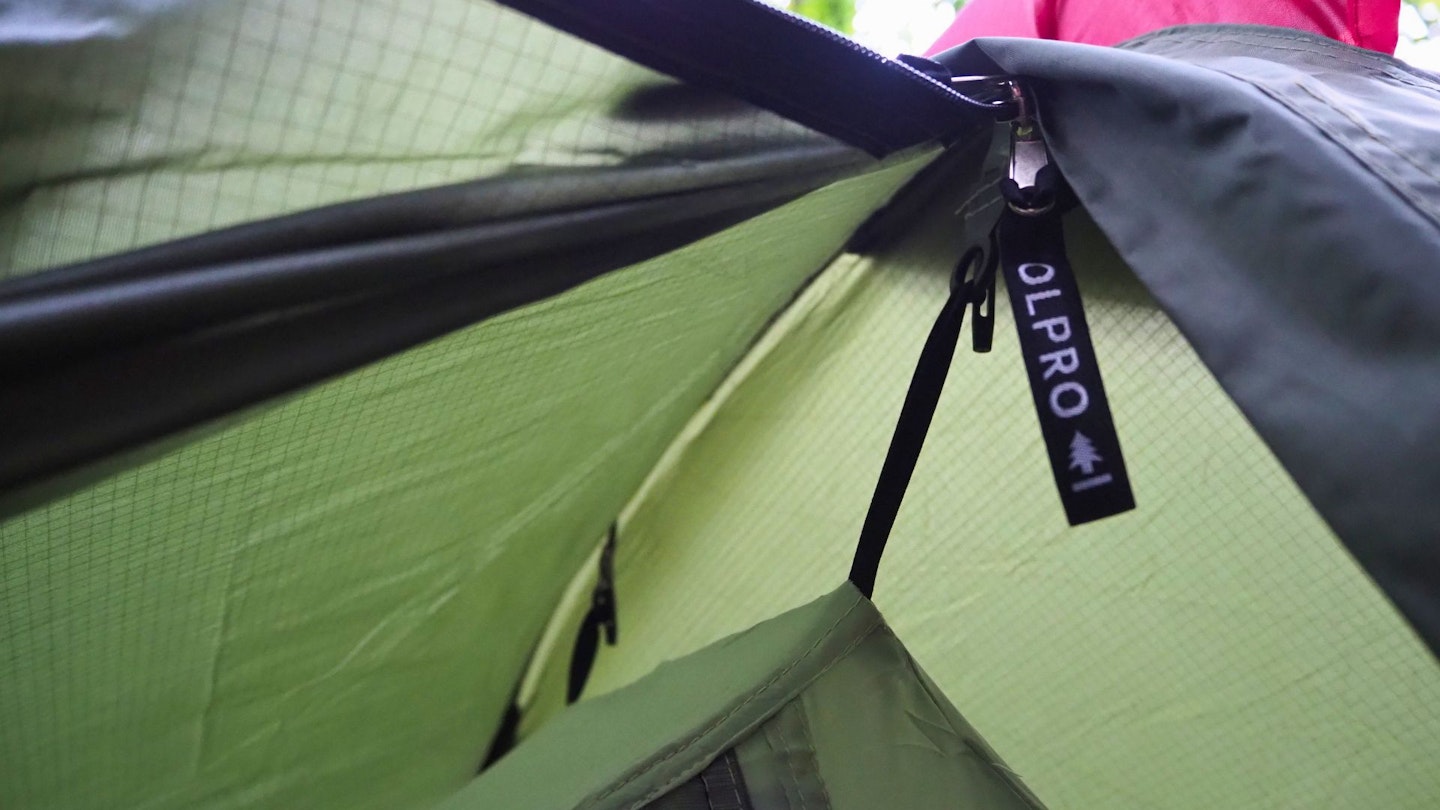
The Solo is a twin skin tent – it has an outer flysheet and separate inner. The tent can be pitched outer first or all-in-one when the inner is left connected to the flysheet.
In terms of weight and size, the Solo is 1.8kg. It’s therefore not the lightest one-person tent around but it’s hardly a burden. And packed away it measures 45 x 14cm – again, not class leading but not an outlier either.
Pitching
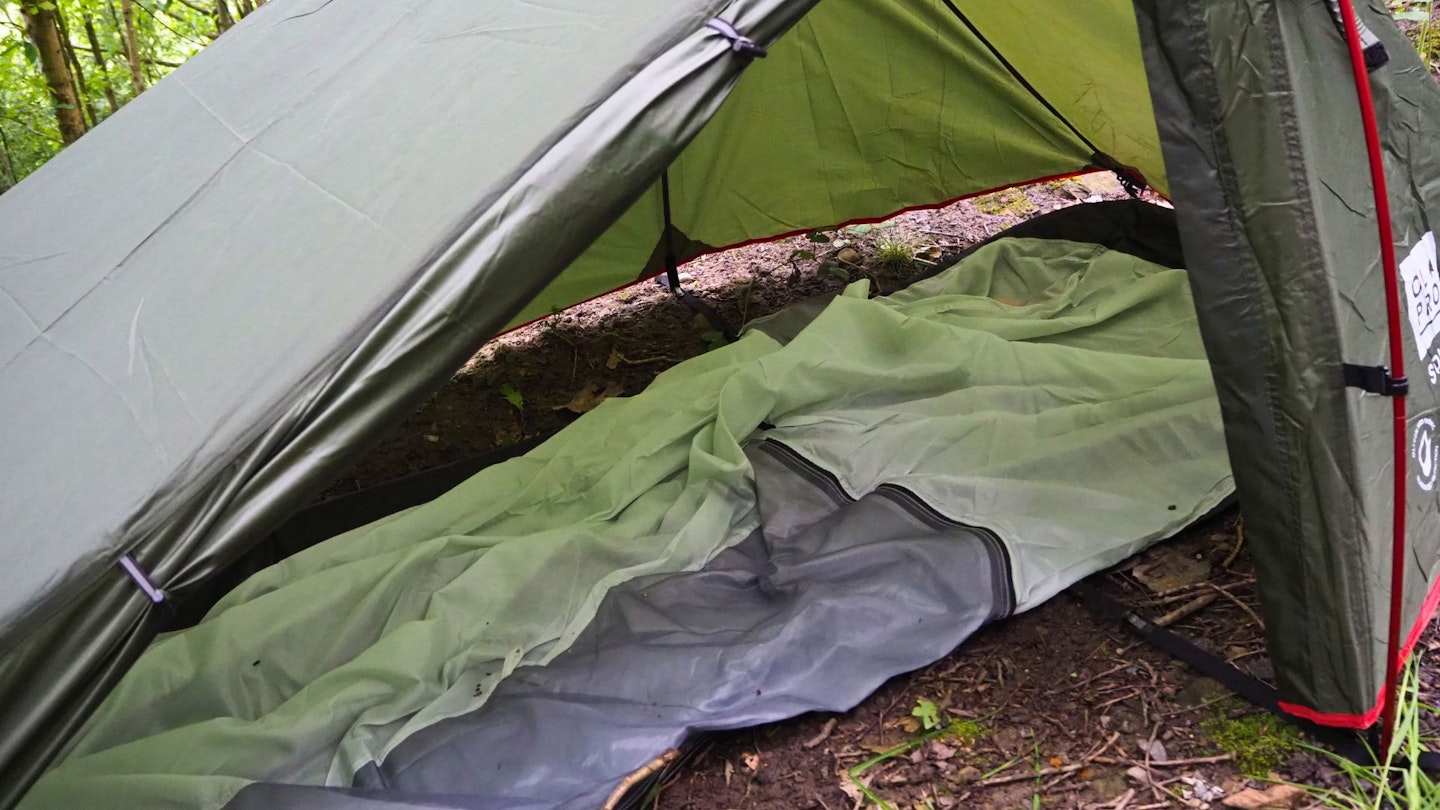
Compared to some dome tents that use a connected, single hubbed pole structure, the OLPRO Solo takes a couple of minutes longer to pitch because there are three poles to position (even though two of them are tiny).
You can speed up the process by keeping the inner connected to the flysheet, but beyond this it’s a case of pegging out the tent corners, inserting the poles, then clipping, connecting and guying everything out. It’s a five-to-10-minute ordeal.

We think the inner-first or all-in-one pitch design is a very good idea. It’s something that American and Australasian tent makers often avoid – it's purely reflective of the conditions and climes they’re design for. OLPRO has clearly intended to make the Solo suitable for three-season use in UK conditions, where rain is prevalent.
Taking the Solo down is a simple process. As we said, you can leave the inner attached to the flysheet and it’s very easy to roll and stuff the tent back into the burrito-style bag.
Living and comfort
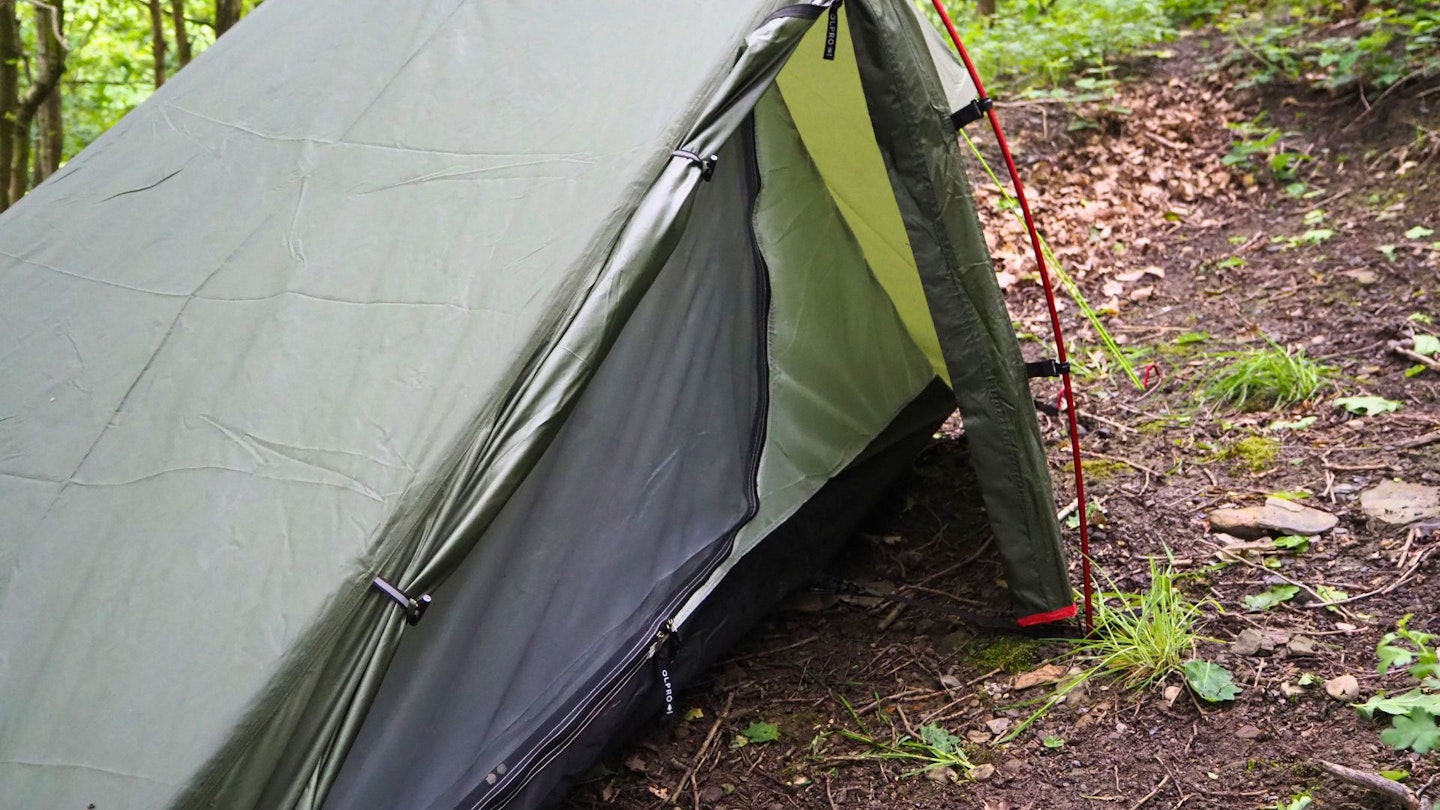
One-person tents are never palatial but one expects them to be accommodating. Our tester is 6ft2in and was pleased that he could lie down fully and even sit up (just – his head was brushing the bedroom ceiling) inside the OLPRO Solo.
The vestibule space, however, is pretty small. There’s room for a pair of boots but not much for a 50+ L pack. If you’re doing an overnighter there’s enough space for a 30-40L pack, though. The bedroom does extend outward on the opposite side to the door, which allows for some more internal space if needed.
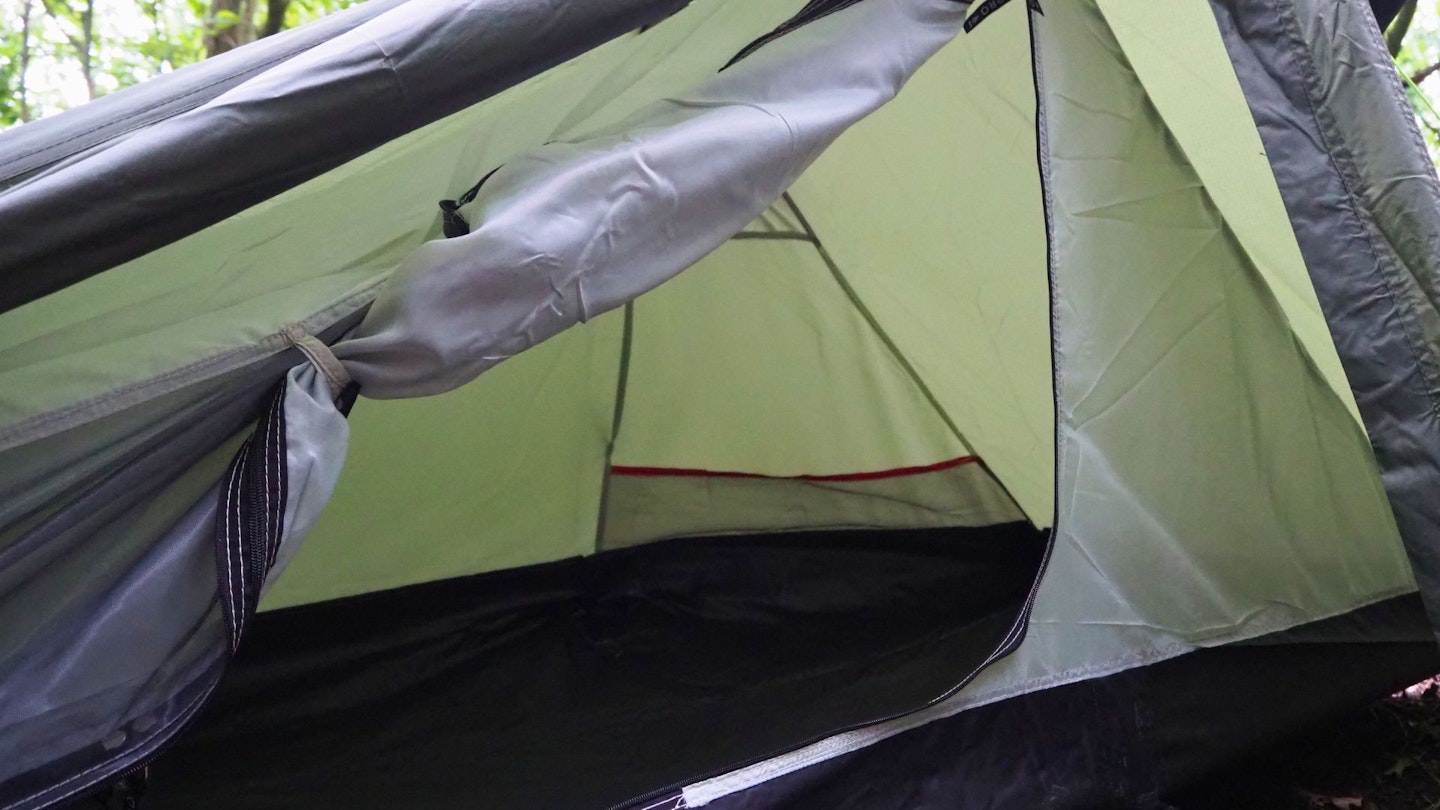
The inner fabric is light coloured which reflects heat and lets plenty of light in, which we think is the right approach. The door has a mesh panel to help with ventilation – there is a vent flap at each corner of the flysheet for the same purpose.
Durability and weather resistance
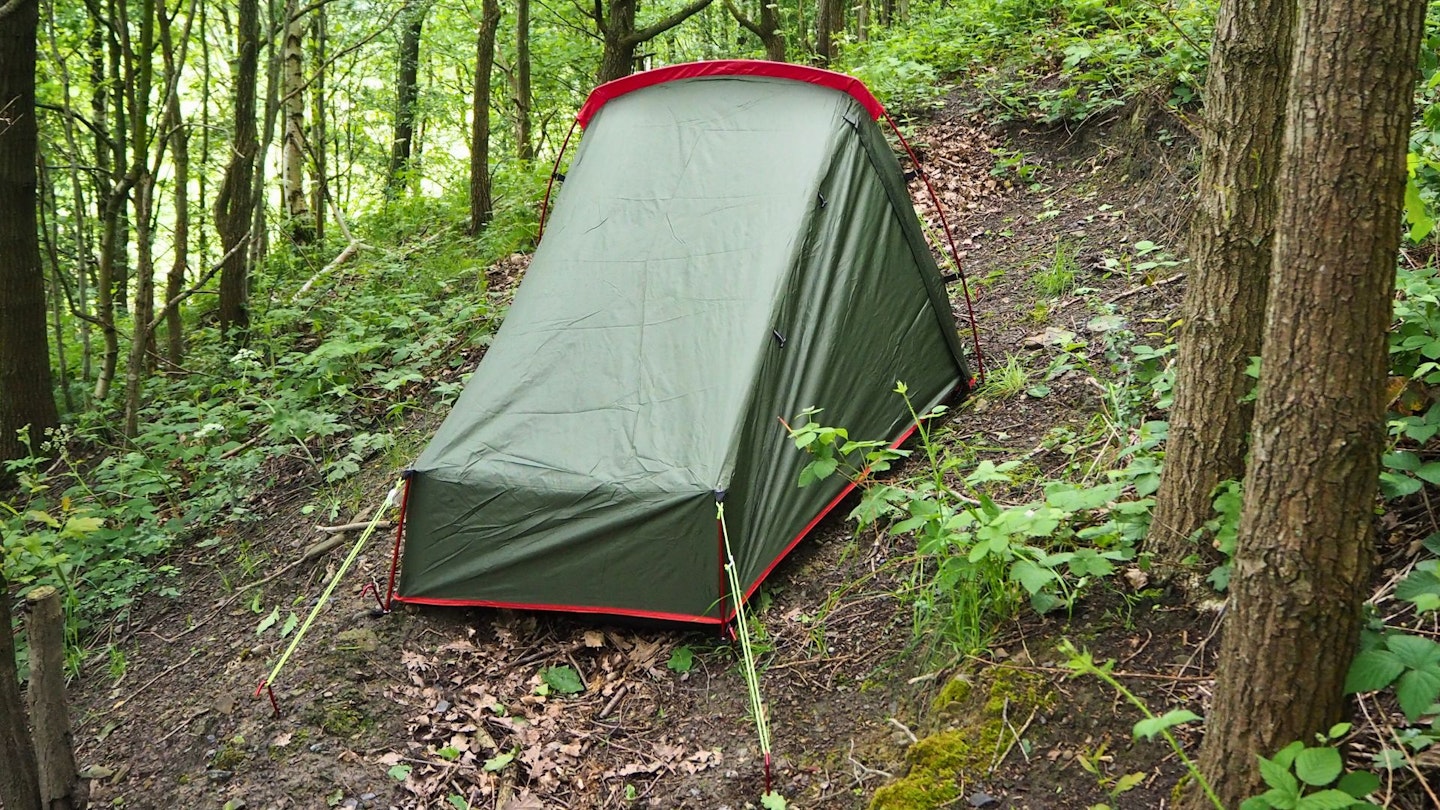
We think the OLPRO Solo performs impressively well for a tent as affordable as this. The aluminium poles and pegs are reasonably durable, so too are the fabrics. Frankly, they feel less fragile than some uber lightweight, sub-1kg premium tents, but the main weak points we think users should be wary of is stitching. It was fine during our testing over a couple of months but it did seem to be being a tad strained in a couple of areas, such as the pole sleeve.
The structure is pretty stable too, and the flysheet extends almost to the ground and ensures wind-blown rain doesn’t enter the inner. The bedroom floor extends up at the sides in a bathtub style, which means wet ground isn’t problematic either.
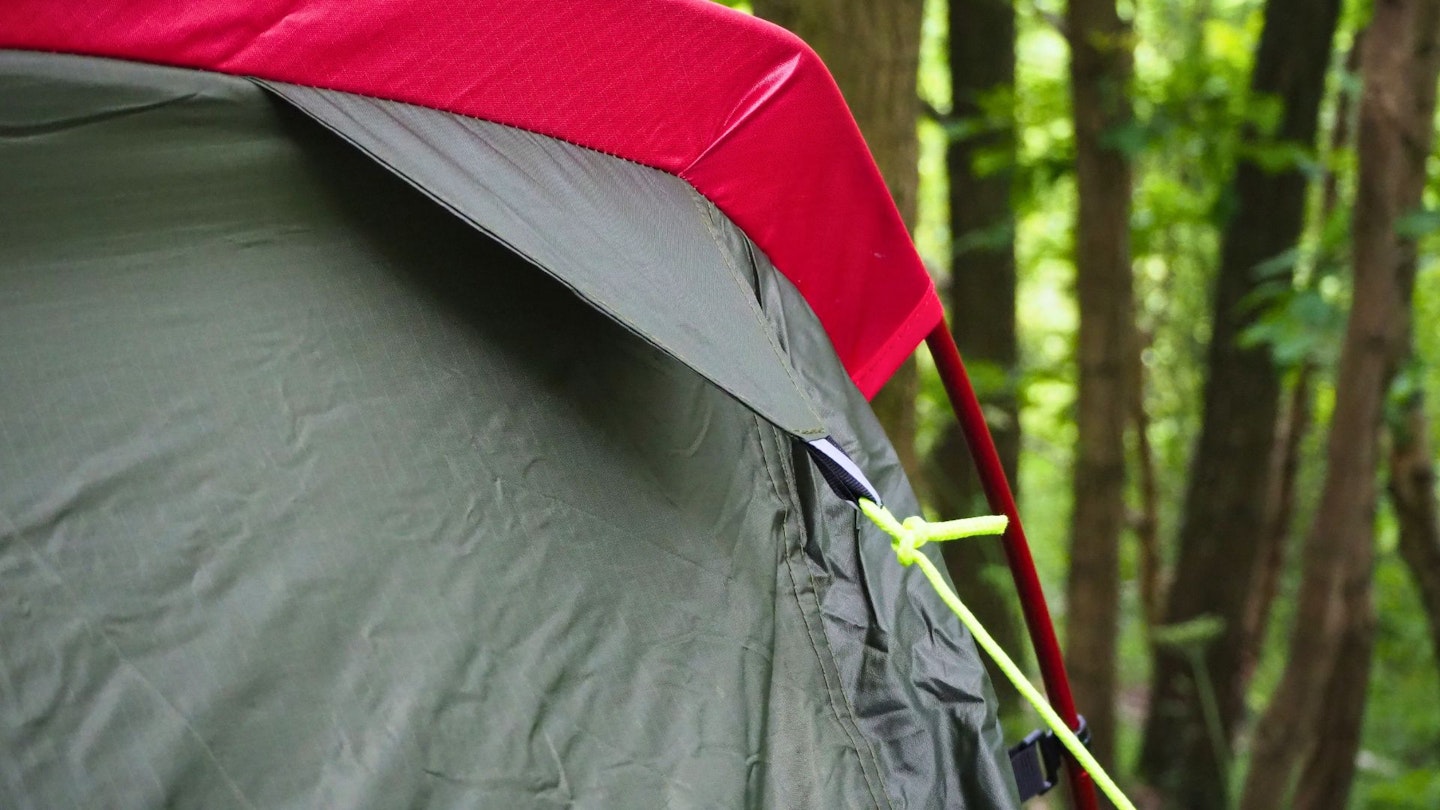
Sustainability
Tents – whether cheap or expensive – don't often have many eco credentials to boast about (there are some, but these are exceptions that prove the rule).
OLPRO does have commendable eco credentials. The fabrics it uses for all its tents and awnings are made from recycled plastic bottles, but there is more. OLPRO is a certified B Corp, which is an independent certification that means businesses meet high standards in terms of governance, workers, customers, community and the environment.
OLPRO provides an extensive range of spares (including poles for the Solo) and takes back used tents to refurbish and resell or recycle.
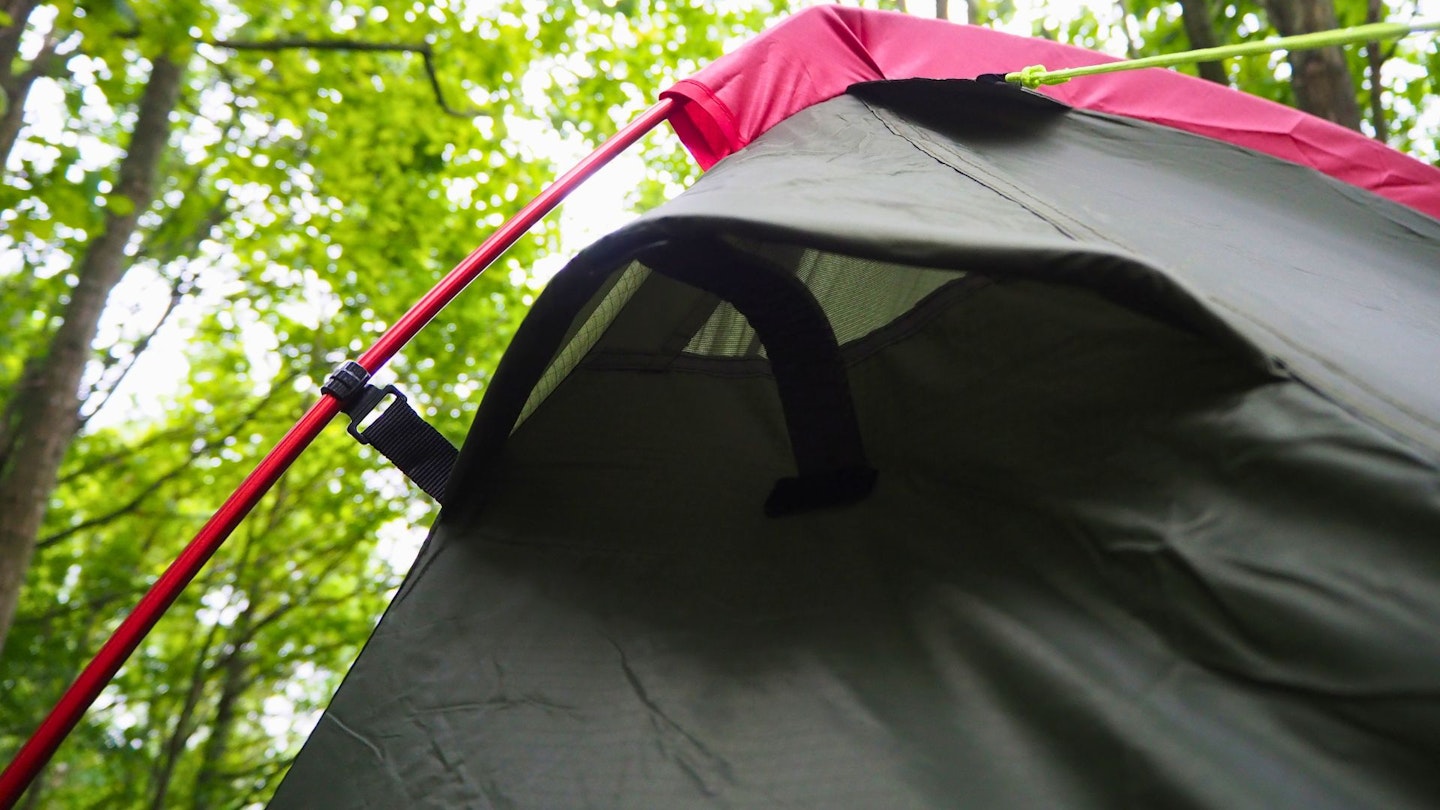
Price and competition
At the time of writing, OLPRO advertises the Solo with an RRP of £178, but it’s been priced at £125 for our months of testing and other retailers also have the Solo priced at £125.
This makes it incredible value, beating even the similar Vango Apex Compact 100 – the tent we consider the Solo’s closest competitor. They are both low-cost one-person hiking tests that weigh about the same and have almost identical shape and dimensions. Like OLPRO, Vango provides replacement poles for its Apex Compact 100. But, Vango doesn’t have B Corp certification.
If you’re looking around for a reliable but more affordable hiking tent, we’d suggest, if you can, checking out Terra Nova’s Wild Country tents. Its Helm and Zephyros Compact 1 models are superb, high quality three-season tents that cost around £250. The Helm Compact 1 has previously won a Gear of the Year award from us before for being as good as rivals costing an awful lot more.
Verdict
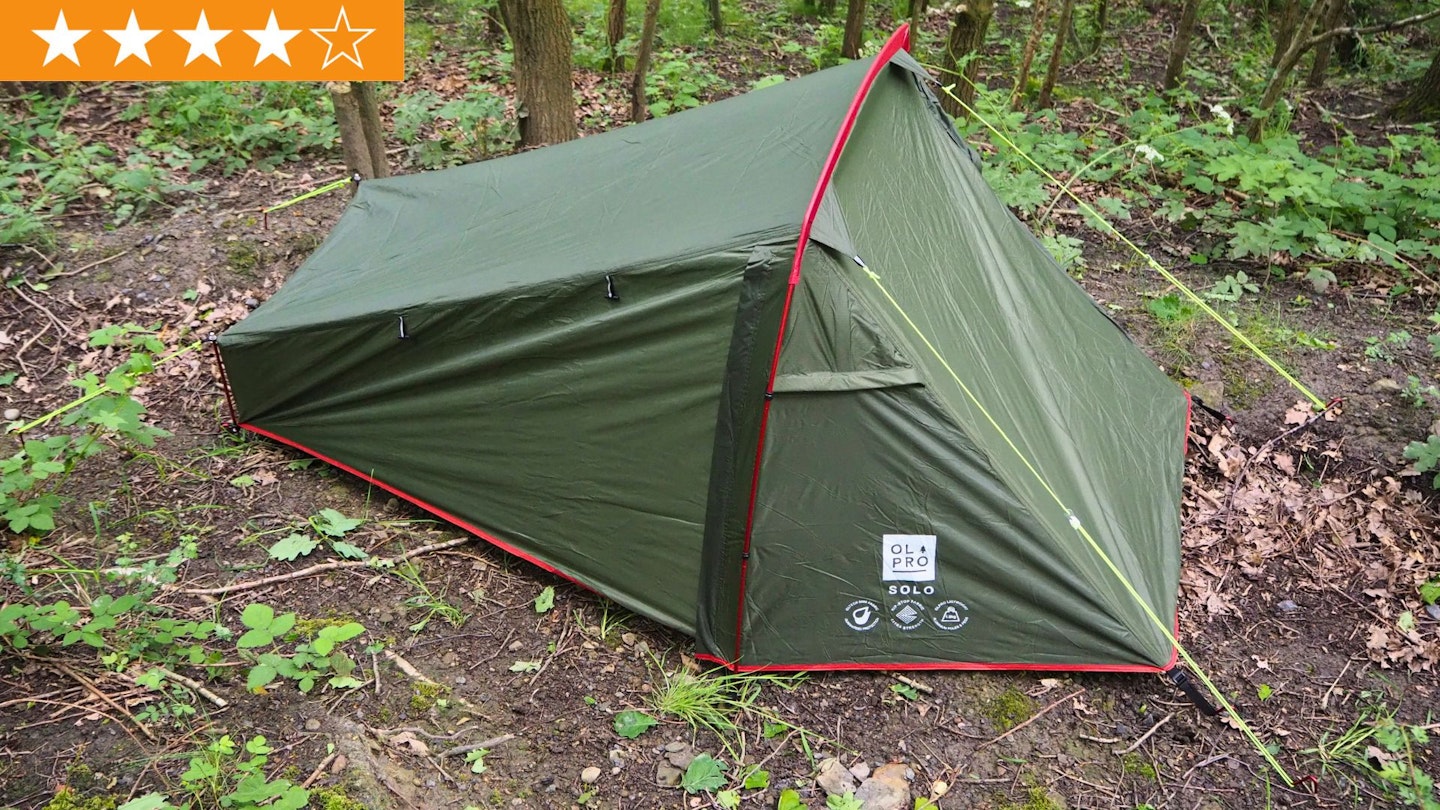
The OLPRO Solo is our current pick for a low cost backpacking tent. It performs very well and has a number of crucial features that ensure it is a reliable, comfortable shelter in most conditions.
Part of the reason it stands out among its few rivals is also because OLPRO has respectable eco credentials too.
How we tested
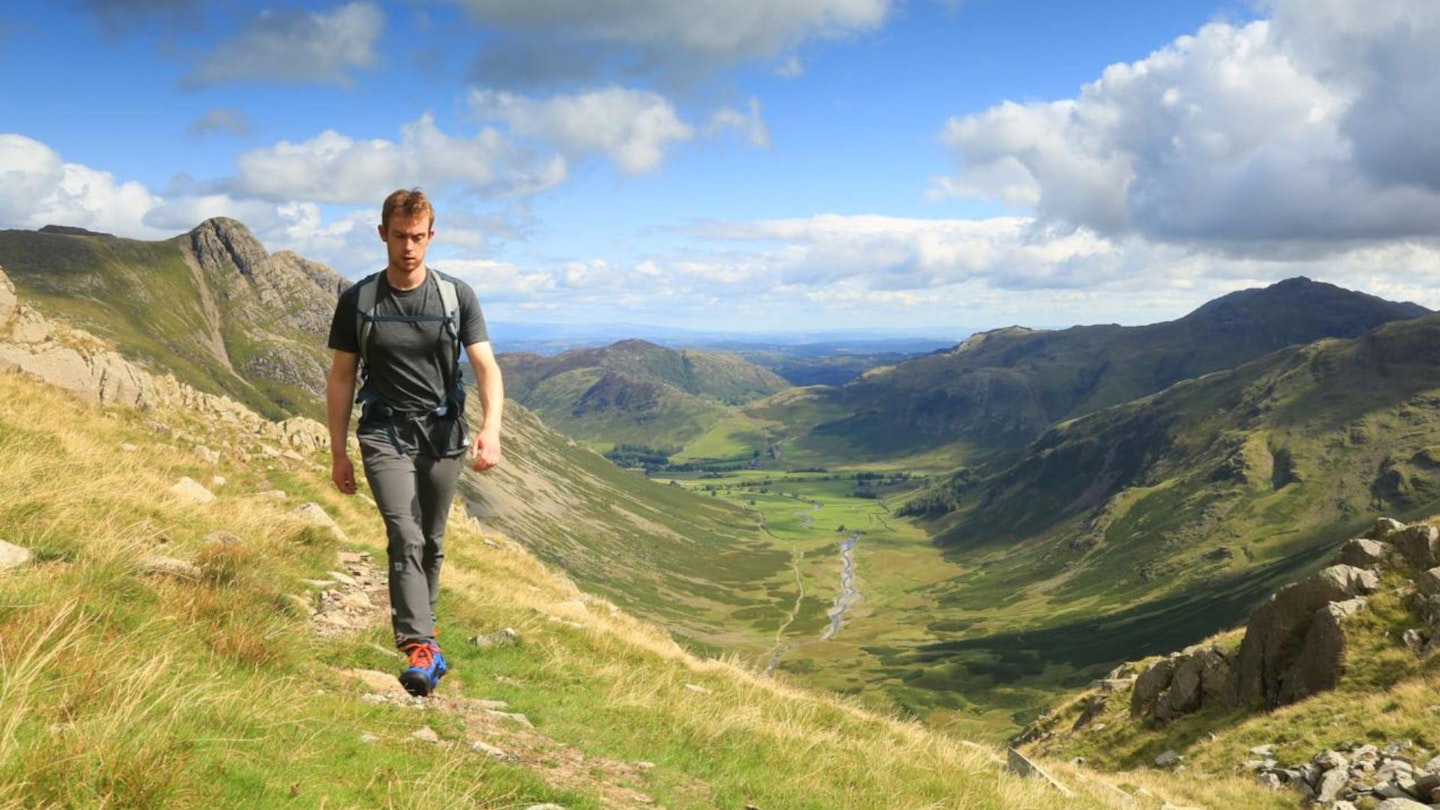
The OLPRO Solo was tested by Chris Williams, our Senior Writer on LFTO. He tested it throughout spring in Yorkshire to see how well it performed in changeable and often wet weather.
Chris has extensive knowledge of outdoor gear thanks to years of practical experience in addition to technical expertise from working with one of New Zealand’s leading outdoor gear brands.
